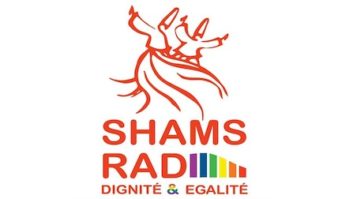Almost every day we read and hear about the impending demise of radio. Terrestrial radio. The radio we’ve all enjoyed and depended on for the past 85 years.
It’s about to be eclipsed and replaced by other digital wireless delivery services popping up all over: satellite radio, iPods, wireless Internet and cellphones with streaming Web content. With all these choices, radio surely will be swept away to the ash heap of antiquated technology.
If you spend time lurking around online radio listservers, you’ll get a sense of the prevailing attitude. Accomplished radio vets, usually engineers, are predicting radio is not long for the modern world. Some even hope aloud that they can make it to retirement before their jobs and stations disappear.
GADGETS GALORE
Much of the apprehension grows from the gadgets spawned by the Internet revolution over the past few years. Ever since Web access became portable in a small package, the concern that radio is in deep trouble has deepened in the minds of many.
The younger generation traditionally has been quick to acquire and use the latest personal electronic devices. Many of these devices enable the user to store and play content historically provided by radio, now also conveyed through other means. Favorite songs, news, information and even talk can be delivered in a small portable device that is no longer a radio.
There’s nothing new about this trend. Younger demos and techies are the first to embrace consumer electronics innovations. It happened with 45 records, 8-track tapes, cassettes, CDs, Walkmans, Gameboys, PCs, PDAs, cell phones and now iPods. The latest gizmo brings acceptance and status within peer groups.
CALL THE MORTICIAN
Ask typical 18-year-olds and they will tell you radio is passé. It’s not cool, it’s virtually irrelevant. What is cool is to proclaim that they never listen to radio.
They get music from file-sharing downloads and listen to it on iPods. Their main sources of infotainment are television and the Internet.
AM radio, you ask? Those who even know what it is will tell you their grandparents might still listen to it.
If you believe critics who say such mass-media consumption habits will remain pretty much the same as young consumers age, it doesn’t look good for radio. May as well write the epitaph and get ready to close the book on its storied history.
Not so fast there, digithead.
Those who subscribe to this theory, and are a part of it, are too far inside the modern digital media forest to see the trees. Like trees, people grow up and branch out. Their interests become more varied as they discover other diversions and leisure-time pursuits.
They start doing other things with their free time besides cruising the Net, IM’ing and keeping their iPods freshened up. In the old days they would have cruised the drag, hung out on the phone, read books and listened to records.
To paraphrase Yogi Berra: similar but just a little different.
As young folks finish school, meet significant others, marry, get jobs, buy houses, move around and start focusing their time and attention on those priorities, they begin finding outlets for their infotainment that are more easily used, less predictable and more interesting. Radio has almost always been one of those.
EVERYWHERE FOR EVERYONE
Radio just might be the most ubiquitous electronic communication device out there, although some would argue the cellphone has caught up. Ninety-eight percent of the 12+ U.S. population has access to a radio. Every household has an average of five radios. Virtually every car has a radio. The majority of folks who commute via car turn on their radios and listen every day.
Radio is totally portable; it comes in all sizes and colors, with many personalized programmable features. Just turn it on, punch up a favorite station and go about whatever else you want to do — all hands-free without wires and without worrying about the demands of interactivity. Not having to expend much effort to be entertained or informed is one of the blessings of advancing age and wisdom.
Satellite radio may have hundreds of commercial-free channels; but it isn’t local and never really can be despite adding local traffic reports in some markets. You can listen in a car, out in the clear; but reception inside buildings and among overhead obstructions too often makes satellite radio unreliable.
And of course there’s that pesky monthly subscription fee.
BE COOL
The challenge for terrestrial radio for some time has been to find new ways to be cool again, to be more relevant and competitive in a crowded field of electronic mass-media choices.
We simply need to keep up with advancing technology so the perceived quality, reliability and attractability of our product compete on a level playing field with all the others.
That’s where HD Radio comes in. Yet many of our doomsday friends have decided HD comes with too little, too late. The complaints include all their familiar talking points: HD causes adjacent-channel interference and wipes out AM fringe area and skywave coverage. It offers marginal improvement over analog and lacks a “true killer app.” And the compression codec degrades the audio quality.
Complain all you want about digital compression, but the public decided long ago that MP3s sound like CDs and are judged as having higher quality than radio, even FM radio. Noise and multipath are responsible for that, not codec artifacts.
If we as an industry don’t bridge that gap, those who claim to be hearing radio’s death rattle might have a shot at being right.
Apart from engineers and purists, the mass audience doesn’t care much about maintaining pristine audio quality. Entertainment quality is perfectly acceptable. HD Radio easily provides that, even at bit rates well below 96 kbps.
And complain all you want about bad content and too many radio stations sounding the same. HD brings multi-channel capability that creates additional channels of variety and specialty formats along with the main channel.
In the past, most owners couldn’t succeed doing narrowcast formats on standalone, full-signal stations. This opens up a new offensive front for traditional radio.
MEASURING SUCCESS
We mustn’t forget that radio is more than just a delivery platform for content. Our business has always been about developing and showcasing the best entertainment and information programming we can find that appeals to the largest audiences. We are continuously measured by how well we do that every quarter.
Radio is blessed with the distinct advantage of being able to deliver content efficiently over a wide area from a single point. Simple, low-cost, portable receiving devices along with those built into cars have enabled any consumer to use and enjoy radio with ease.
The new technologies so many see as threats to radio mostly employ a cellular topology with streaming content via the Web and other sources. They certainly want to mimic radio’s delivery capability but are climbing a much steeper path in providing the same quality of user experience.
The new generation of cell phones with Net-enabled audio streaming are a prime example. They offer limited and less reliable coverage along with a more complicated interface and expensive access. Thus the product appeals to a smaller and more select audience.
Imagine the average consumer using the highly anticipated multifunction, high-fidelity cell phone with Internet, e-mail, PDA, iPod and camera all in one small, handheld package. Some will eventually include radio and TV reception. Talk about feature overload and, probably, an incredibly confusing control interface.
Radio will counter this by integrating Internet resources and download links into its HD datastream. Various kinds of new interactive services are poised to team up with simultaneous automatic cell phone uplink communications. When the hybrid period gives way to all-digital, a multitude of new offerings and innovations will appear.
DRIVING IN TRAFFIC
Until wireless broadband and cellular telecomm services become extraordinarily cheap and saturate all population centers, the new technologies that want to replace radio will struggle to attain wide-area seamless coverage and overcome a variety of other unique challenges to make their product more user-friendly and attractive to the mass audience.
Until that happens, radio has at least several opportunities for continued success, doing what it does best as well as some new tricks.
Radio stations everywhere are ramping up development of their own interactive Web sites. With podcast downloads, links to lots of other valuable resources, plus the live streams of their air product, radio simply adds another delivery platform and merges itself with the Internet.
Even if wireless Web streaming devices manage to displace the traditional radio receiver someday, radio will have completely integrated itself by then as part of a new mass-media world in which most all communications flow through the Internet.
Maybe you’re still skeptical; but I’m feeling pretty good about radio. Stay tuned and don’t give up on the grand old medium just yet.










